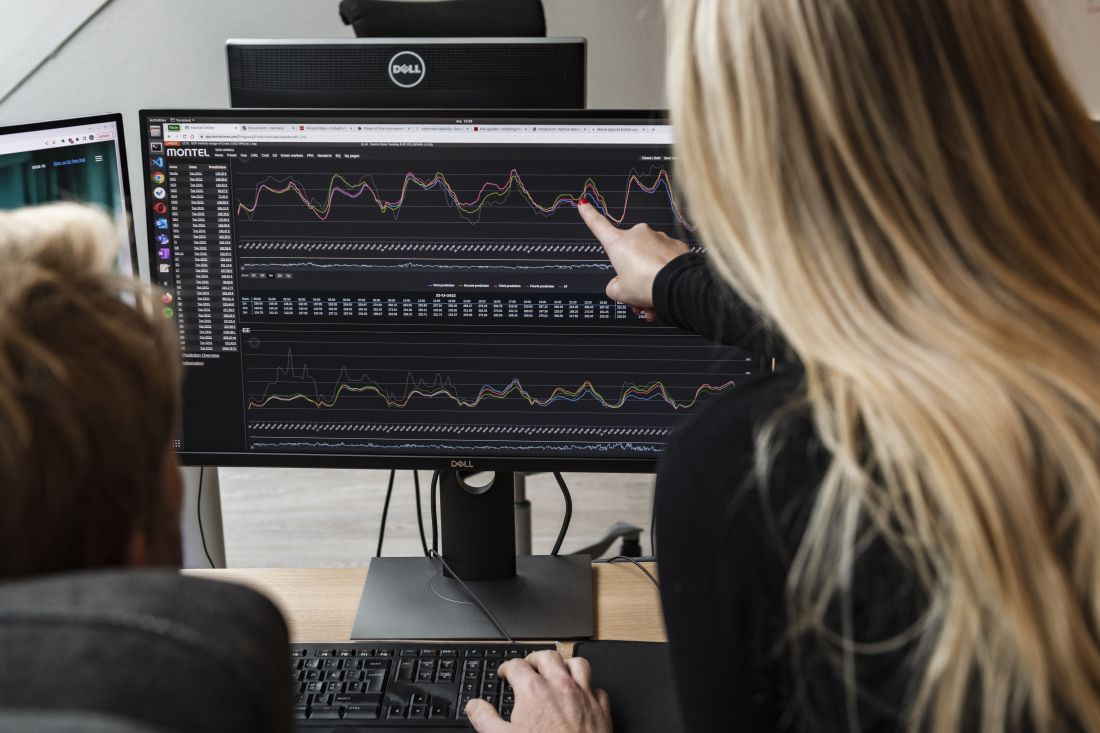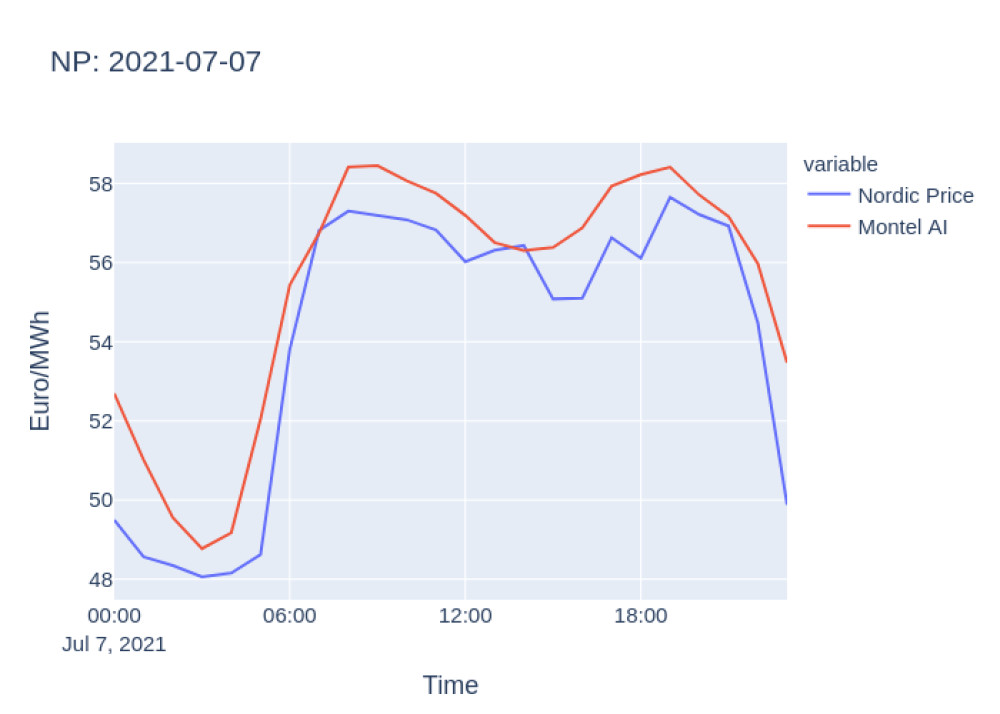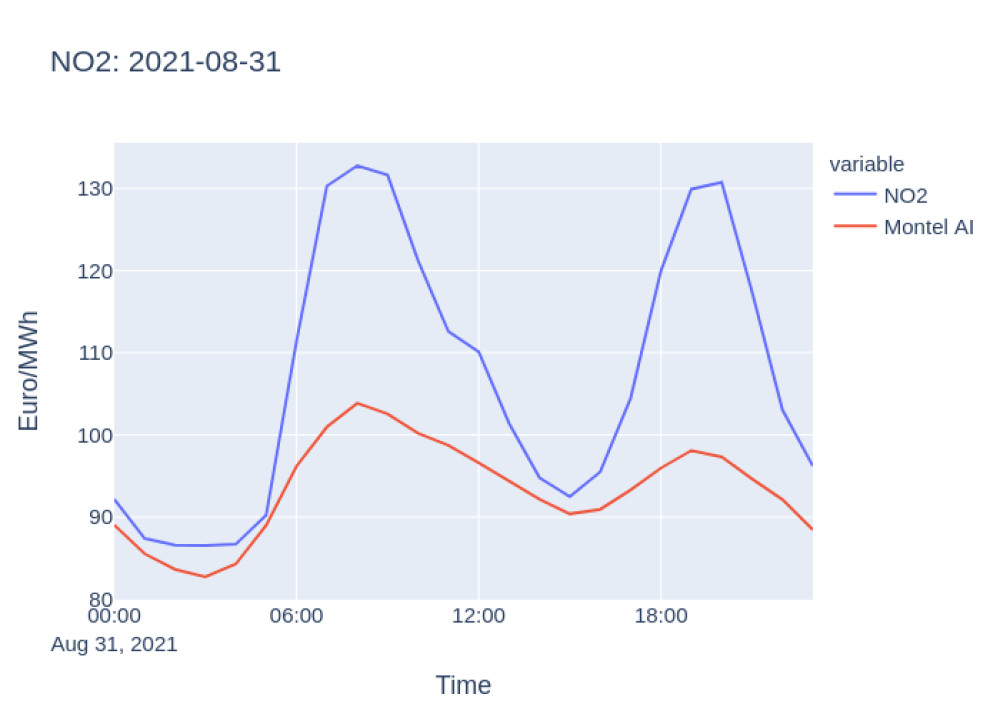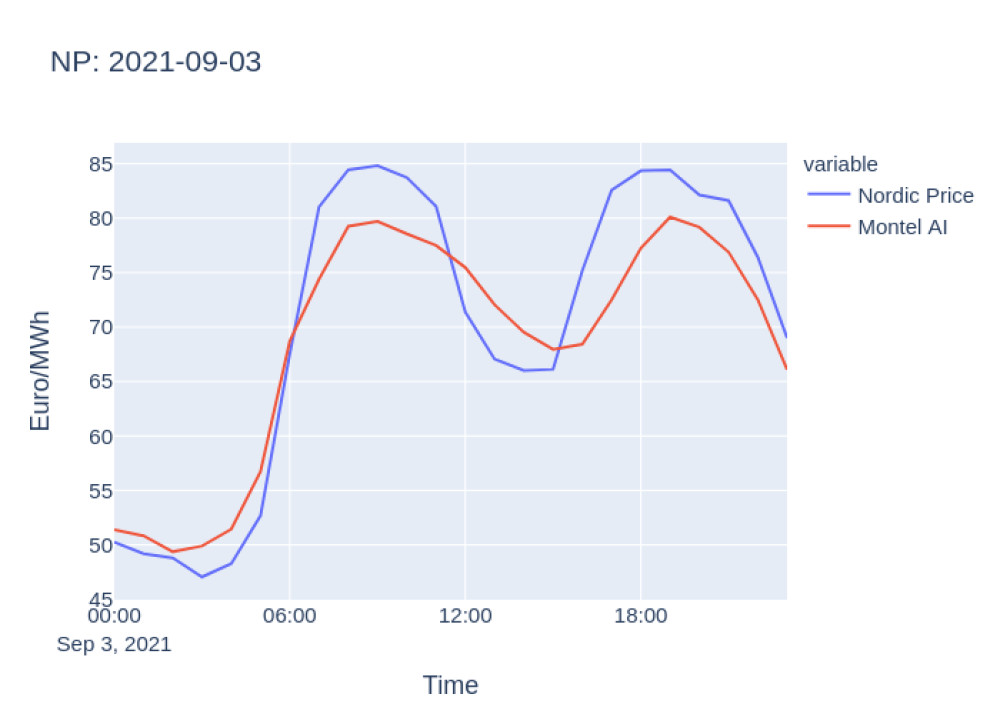The next example is proof of that statement. On 31/08/21, a combination of factors (dry weather, hydrological deficit, scheduled maintenance for nuclear power plants, bullish wind forecasts, high prices in neighbouring continental markets) meant that extreme and ‘peaky’ spot prices were experienced in the Nordic region, and especially in the NO2 zone. The prices were (at that time) the highest recorded in eight and half years.
“We see that the AI model predicts increasingly high prices, but it fails to settle at the correct level, or account for the strong daily peaks,” says Tobias. There’s one potential explanation, he thinks. This summer was the first year in which the Nordlink (NO2-DE) cable has been operational, which meant that continental price peaks had an especially strong impact on the NO2 zone. Flows for the cable are still limited in most situations because of bottleneck issues in the German grid. “The errors in the AI prediction might be partly due to the lack of training data that the model had for such situations,” he says. "But what makes AI unique is that it will automatically learn from these mistakes, that's part of the process."
(In general, the model performed well throughout August of that year, with an average error of €3.8 (5%) as prices averaged €72 in NO2.)
Example 3 – High Volatility Day, Nordic System Price
03/09/2021




